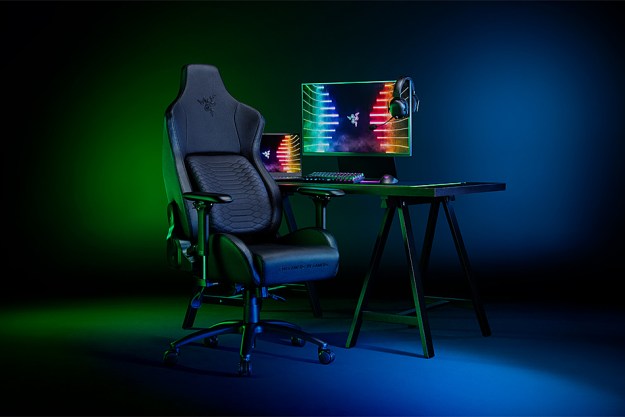 Following the destruction of the World Trade Center, America was deeply wounded. Beyond the physical damage and loss of life, it was an open gash in our psyche, and one that refused to heal. It drove us slightly mad, and in our madness we embraced a new world order, built on justification rather than morality and ideals.
Following the destruction of the World Trade Center, America was deeply wounded. Beyond the physical damage and loss of life, it was an open gash in our psyche, and one that refused to heal. It drove us slightly mad, and in our madness we embraced a new world order, built on justification rather than morality and ideals.
That wound has since become a scar, but like all scars it may never completely fade. History will be the eventual judge of what we were and what we did, but the so-called “Fog of war” is still very much clouding the last decade. Our actions, our morality, our ideals; they all took a hit and will require some soul searching for years, even decades to come.
That is where the film Zero Dark Thirty exists. The movie itself is defined by the hunt for bin Laden, but it is also about the shadowy world operating under the skin of what was reported. It focuses on the actions of people we would never even know exist unless they screwed up. Their contributions to the world – both good and bad – remain mostly anonymous. Even the major events, like this one that became history, are only told using pseudonyms and composite characters gathered from second hand reports and deductions (as well as allegedly unauthorized access to classified material).
In this gray world, things like torture, more palatably known as “enhanced interrogation techniques,” are a tool that the CIA agents use. It is depicted as a necessity, even a duty that the agents take no pleasure in, but have no problem with either.

There are three ways to look at it. The first is that Director Kathryn Bigelow (The Hurt Locker, Strange Days) is attempting to justify the use of extreme methods when dealing with extreme people. The information gained through torture is vital towards the end goal, and therefore it was justified. This viewpoint of the film is strengthened by the fact that several people in the know have claimed this is simply not the way this happened.
Former CIA officials and operatives have stated on record that enhanced interrogation is not just ineffective, but often leads to false information as well. They also say that the information that led to bin Laden, or more precisely his courier, was not obtained through torture, but rather multiple sources replying on more traditional methods of intelligence gathering. Critics of the film point to this and claim that it shows that Bigelow is ignoring facts in order to show torture as justifiable.
The second way to look at the film is that we should automatically accept torture as a terrible act, and so the actions taken in order to further our goals taint us. By removing any sense of outrage for the audience to hold on to, we become complicit in the actions that our government authorized. We are all culpable for what happened. It’s a stark reminder of how easy it is to lose our morals, and how simple it would be to not care. That’s a somewhat optimistic view though, and relies on the audience being revolted by the torture being depicted. Showing these tactics to be successful makes it hard to completely dismiss them, even if the real world has since.

A third option, however, is that the film is simply trying to portray the times as they were, without a filter, and without any sense of hindsight. The agents, played brilliantly by Jessica Chastain (Tree of Life, The Debt) and Jason Clarke (Lawless, The Chicago Code), are worn down by the world they find themselves living in, but not to the point where either even consider quitting. It weighs on them, but they are accepting of their roles. The consequences are subtle, but not inescapable. When the climate changes and the Enhanced Interrogation Techniques are prohibited, the characters simply adapt without debate.
When it comes to torture the audience is left to their own devices, and left to decide if the ends justify the means. But while that is certainly the most controversial aspect of the film, it is just one part of it.
Zero Dark Thirty is Maya’s story, and the character of Maya, played by Chastain, is based on a supposedly real life CIA operative. Maya is driven and dedicated, yet also human and operating in extraordinary circumstances that she grows used to without thinking much about it. Perhaps it is heroism, perhaps it is just stubbornness, but she refuses to stop.

Chastain is perfect for the role. She is able to convey a great deal of emotion without a single word, which is important for a character that isn’t ever a driving force because her role as a covert operative requires her to be far more low key. Rather than trailing the bad guy, she needs to convince others that she is correct and have them follow the bad guy. Then when she can step up and take the lead, she does so easily but without ego. It would be easy to call her character “haunted,” but that would do her a disservice. She is certainly affected and changed by her experiences, but she rolls with them, as people do.
It isn’t an easy role by any means, but Chastain is suited for it. She is also helped by talented actors at every level, from Kyle Chandler (Super 8, Argo) as her CIA boss in Pakistan, to Joel Edgerton (Warrior, The Thing) as Patrick, a member of the team that actually assaults bin Laden’s compound. With the exception of Chastain who is the star, and possibly Clarke, this film is very much driven by an ensemble cast and it features no weak links.
And that is a very good thing, as this movie is very light on the action. There is nothing wrong with that, but the ads for Zero Dark Thirty can be very misleading. The trailers feature every explosion in the film, and are capped by a tense scene of soldiers assaulting a compound. That’s all in there, of course, but there is no way you can seriously consider this an action movie. Those that were lured in by the ads featuring chases and explosions will be severely disappointed.

Zero Dark Thirty is not going to be for everyone. It paints a grim and often disorienting picture, and while you may root for the characters you won’t become attached to them – there just isn’t enough of of them on screen. Even the main character of Maya is distant and hard to relate to, but that’s the point. The world of Zero Dark Thirty is real – or at least a fictionalized look at a very real world.
The movie takes place over several years and features quick glimpses of events and relationships that are never given time to bloom on camera. There is a definite end goal that the movie is hurtling towards, which means characters are introduced and forgotten once their job is completed. That puts the film back on Maya, who as a character has no friends or life beyond her work. There are moments when it is hard to connect with anyone in the film, which makes Zero Dark Thirty a bit more like a documentary than a movie. It is a fascinating, albeit somewhat cold and aloof film.
Conclusion
The question of morality is constantly under the skin of this film, but it makes no judgments. It offers a point of view though, and many might disagree with the lack of a counter argument. That may seem like it is approving of torture because the often cited pitfalls aren’t presented, but the film is a look at what happened without the benefit of looking back.
Zero Dark Thirty is surely bound for massive Oscar love, and Chastain especially deserves that. It’s a fascinating film, filled with plenty of thought provoking moments. It drags at parts because of that though. There is nothing and no one to connect with, and the up tempo moments tend to fizzle out rather than expand – as they often do in real life. As it takes places over several years, it touches on numerous things without ever really focusing on them.
And yet it is a brilliant movie. Cold and aloof at times, but brilliant. Just be warned that the trailers aren’t a good indicator of what to expect.


